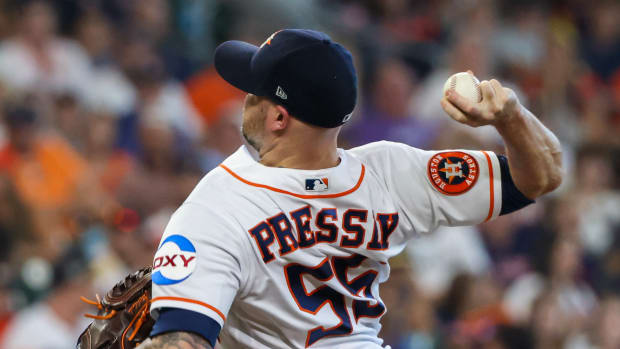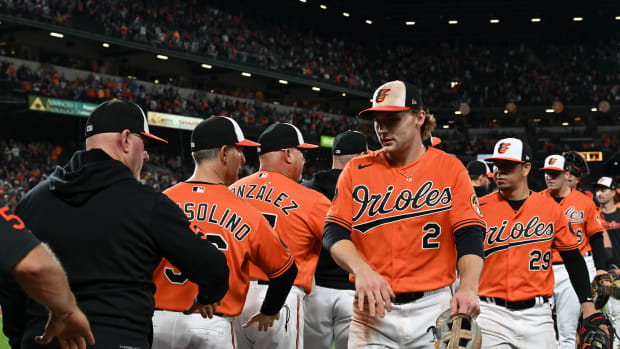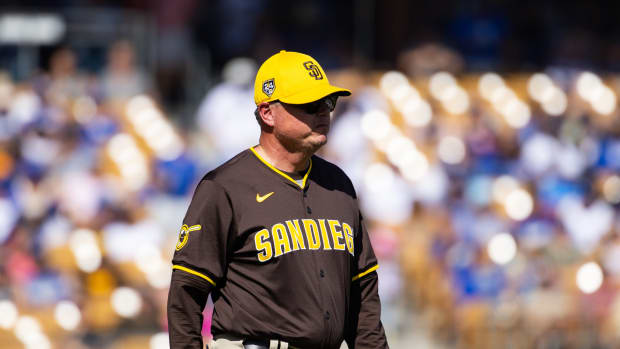Shohei Ohtani's Arrival in America Won't Come With a Fair Contract
With Friday’s announcement that the Nippon Ham Fighters will post two-way superstar Shohei Ohtani for bidding this offseason, MLB and baseball fans are now one step closer to seeing one of the game’s most intriguing talents playing at its highest level. All the more exciting is that he’ll be coming to America amid a winter that will likely be largely devoid of any significant free-agent intrigue. But while we celebrate Ohtani’s arrival and think back to the halcyon days of Brooks Kieschnick, it’s worth reflecting on the process that will bring the Japanese righty to the states—and how patently unfair to him it is.
Let’s start with the posting system. The Fighters will make Ohtani (who recently signed with a U.S.-based agent) available to the highest bidder. How that auction will proceed remains up in the air. MLB and Nippon Professional Baseball have had a posting system arrangement in place since 1998, and while the process has gone through a few iterations, the most recent version was simple. Interested MLB teams would pay a posting fee of up to $20 million to a NPB team for the right to negotiate with a player; if the player signed, the NPB team would get the fee.
That arrangement, however, expired at the end of October, and the leagues haven’t agreed on a new one. As of now, there are two options on the table: Extend the old system for at least another year; or a new proposal in which the NPB team would get a fee equal to 15% of the player’s contract with the MLB team. The latter has been rejected by the Fighters, and understandably so: With Ohtani’s first MLB contract capped at roughly $3 million thanks to the league’s new international amateur signing rules, Nippon would receive at most a mere $450,000 to give up his services if it agrees to a flat percentage fee.
Shohei Ohtani—Japan's Babe Ruth—is About to Change the Face of Baseball
Half a million dollars in exchange for a player worth potentially 400 times that is obviously poor compensation, and it reflects the dire power imbalance between NPB and MLB. The Red Sox had to give $51 million to the Seibu Lions as their winning bid for ace pitcher Daisuke Matsuzaka in 2006; just a decade later, an equally transcendent talent in Ohtani will, in the best case scenario, bring back less than half of that amount.
But in the end, the Fighters are still likely to walk away with $20 million in exchange for Ohtani, which is far more than he himself will be able to earn. As noted before, MLB’s international amateur rules, as agreed to in the most recent CBA, deem that any foreign player under the age of 25 is subject to signing restrictions—an age limit that was raised from 23 in the previous CBA. Ohtani—who turned 23 in July—is thus limited in how much he can sign for by how much teams have available in their bonus pool. For most, that’s a figure in the hundreds of thousands of dollars thanks to the new CBA’s creation of a hard cap that allows $4–6 million for an entire year’s worth of international signings.
Under the old system, Ohtani would have been free to negotiate as big a deal as he could get, and he likely would have pulled in a figure north of the $155 million that Masahiro Tanaka got from the Yankees. But thanks to the new CBA, Ohtani will be forced to sign a minor league contract, and most he’ll be able to make on his first deal will be $3.5 million—the biggest amount of bonus money any MLB team (in this case, the Rangers) has left for the year. Teams can get around that restriction in a number of ways—incentives, perks and other kinds of signing bonuses—but at the end of the day, the guaranteed money coming Ohtani’s way is a fraction of what he would have earned had he come to the States as a 25-year-old free agent. And if he gets seriously hurt or struggles to adapt to MLB early in his career, he’ll never have a chance to make up the difference.
Ironically, the biggest source of blame for Ohtani’s financial predicament is the union that will soon be representing him. The MLBPA essentially bargained away his rights last winter by giving owners and the league the power to depress the earning potential of foreign players with these new rules. That several poor Dominican, Venezuelan and Cuban teenagers would be locked out of a life-changing sum of money seemingly didn’t matter to the MLBPA, and why should it? After all, most of those kids would never make the majors and would never be dues-paying union members. The owners, meanwhile, were all too happy to save some money and avoid making expensive mistakes by further denying players their deserved access to the free market.
Ten Offseason Storylines: Giancarlo Stanton Trade, Shohei Ohtani Sweepstakes and More
Ownership artificially lowering the cost of labor is a tale as old as time in baseball. This is a league that institutes hard bonus limits in the amateur draft every summer, limits the market for free agents with the qualifying offer and its byzantine compensation rules, and fights its minor league players tooth and nail in their attempts to unionize. Ohtani, at least, is lucky compared to the teenagers who will be given only a few thousand dollars to sign, or those minor leaguers with whom he may briefly play alongside who are forced to subsist on below-poverty wages with no representation. And unlike drafted players, he at least has the freedom to choose his team.
But like the draft picks and minor leaguers before him, Ohtani ultimately has no choice. He can either stay in Japan for another two years, hope to avoid injury or poor performance, and try his luck as a full-fledged free agent in the winter of 2019, or he can live his major league dream now and be punished financially for it. We as fans are blessed that Ohtani will be coming to America’s shores soon enough. But it should leave a sour taste in our mouths that this is how he has to arrive.



































